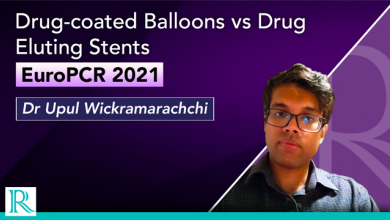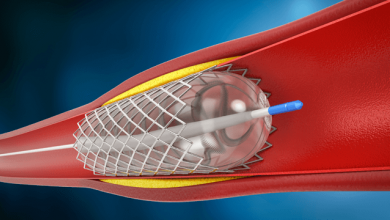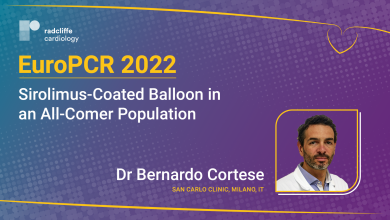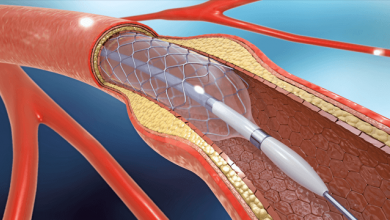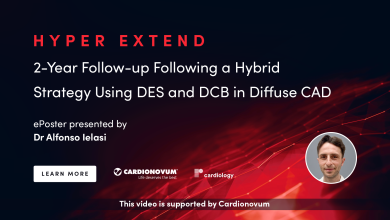Search results
Author(s):
Upul Wickramarachchi
,
Simon Eccleshall
Added:
3 years ago
Percutaneous coronary interventional techniques and devices have evolved enormously since Gruntzig performed his first coronary angioplasty in 1977. 1 It is now the norm to treat patients with both acute coronary syndrome and stable coronary artery disease with drug-eluting stents. We intend to review the evidence and discuss potential benefits of drug-coated balloon-only angioplasty. These…
View more
Author(s):
Upul Wickramarachchi
Added:
2 years ago
In this video, Dr Upul Wickramarachchi (Norfolk and Norwich University Hospital NHS Foundation Trust, Norwich, UK) discusses the clinical outcomes of drug-coated balloon angioplasty treated patients versus drug-eluting stent treated patients for de novo coronary artery disease in all vessel sizes.
Questions
1. What question does this study aim to address?
2. What was the design, patient cohort…
View more
Author(s):
Bruno Scheller
,
Bodo Cremers
,
Stephanie Schmitmeier
,
et al
Added:
3 years ago
One of the most innovative fields of modern medical research is the percutaneous transluminal treatment of vascular disease. Coronary angioplasty was clinically introduced by Andreas Grüntzig in 1977.1 In the coronary field the most important improvement in angioplasty has been achieved with the introduction of stents. A significant proportion of complex modern coronary interventional techniques…
View more
Author(s):
Bernardo Cortese
Added:
1 year ago
Dr Bernardo Cortese (La Fondazione Ricerca e Innovazione Cardiovascolare, IT) discusses the findings from the EASTBOURNE Registry, a study that investigated the sirolimus-coated balloon in an all-comer population.
Findings are positive in regard to the device's safety and efficacy profile, with no safety signals for bleeding and the primary endpoint of target lesion revascularization (TLR), was…
View more
Author(s):
Raban Jeger
,
Thomas Nestelberger
Added:
3 years ago
Coronary artery disease (CAD) remains a major cause of morbidity and mortality despite major improvements in primary and secondary prevention strategies. Percutaneous coronary intervention (PCI) or surgical revascularisation may be indicated in many patients with acute or stable CAD.1
Since the first coronary intervention using catheter mounted balloons, percutaneous treatment of CAD has evolved…
View more
Cliff KF Li
Author
Author(s):
Greg Murphy
,
Ailish Naughton
,
Rory Durand
,
et al
Added:
12 months ago
Sean Lyden
Job title: Chairman of the Department of Vascular Surgery
Author
Author(s):
Gary M Ansel
,
Peter A Schneider
Added:
3 years ago
Clinical Infrapopliteal Disease
Critical limb ischaemia (CLI) typically presents as rest pain, tissue ulceration or frank tissue loss with gangrene, often accompanied by infection. Occasionally a patient may also present with claudication that is so severe that the patient is restricted to a few feet of ambulation. These patients sometimes have early rest pain on further questioning. Diabetics…
View more
Author(s):
Alfonso Ielasi
Added:
9 months ago
This video features Dr Alfonso Ielasi (IRCCS Ospedale Galeazzi Sant'Ambrogio, Milano, IT) presenting a dynamic poster focused on the 2-Year Follow-up of a Hybrid Strategy for Diffuse Coronary Artery Disease (CAD).He highlights the challenging nature of de novo diffuse coronary artery disease (CAD) in interventional cardiology, where limited treatment options exist beyond stent implantation.To…
View more









